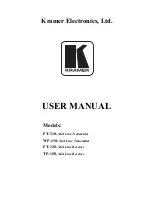
OPERATION
This chapter describes the various transceiver functions in detail. After studying
these descriptions, keep the FT-712RH Operator's Quick Reference Charts handy
in case you need to refresh your memory.
Preliminary Operating Information
Before operating the transceiver, recheck power supply and antenna connections.
Never operate the transceiver without an antenna. Also, please read the chapter on
Controls & Connectors, if you have not already, to familiarize yourself with the
functions of the controls. Note especially the description on page 4 of the
terminology used in this chapter when referring to the buttons.
When the buttons are pressed during reception, one or more beeps will sound if the
command is accepted. Except for certain special cases mentioned later, the buttons
are disabled during transmission.
If you have trouble getting the transceiver to work as described, see 'In Case of
Problems' on page 40.
Squelch Setup
Before turning on the transceiver for the first time, set the VOL and SQL controls
fully counterclockwise. Now press the POWER button and adjust the VOL control
for a_ comfortable volume on the noise or received signal. "BUSY" should be
displayed in reverse letters to the left of the S&PO meter scale. If a signal is
present, rotate the selector knob until a frequency is found where only noise is
heard.
Turn the SQL knob clockwise just to the point where the noise is silenced and
"BUSY" disappears (if the SQL is set further clockwise, sensitivity to weak signals
is reduced). Whenever a signal reaches the receiver that is strong enough to open
the squelch, "BUSY" will be displayed.
Bargraph segments appear in the S&PO box below the frequency on the display
while receiving, indicating received signal strength. This indication
- 18 -
















































